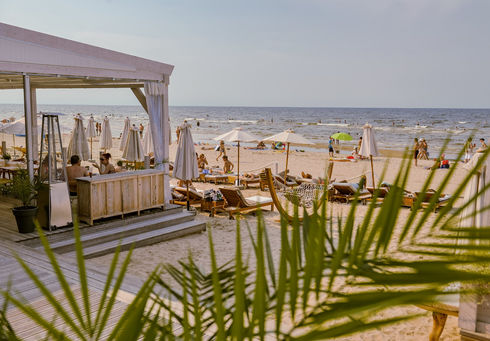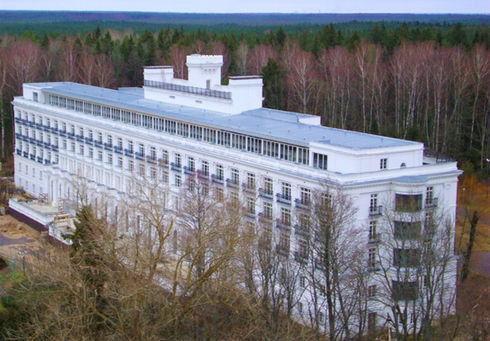Jurmala
Type: Private
Length: 1 day / 3 - 8 hours
Participants: 1 +
Availability: All year
Included:
-
Private transportation from your hotel
-
Guide during the whole tour
In just a 30-minute drive from Riga, you can experience a completely different environment with authentic wooden villas, an easygoing atmosphere and a stunning beach that goes on forever. Jurmala is a perfect location for anyone, offering a wide range of restaurants, spas, sports activities, nature parks, museums and much more. With so much to do, we'll tailor the tour to your needs and interests.
Architecture
Jūrmala is full of cultural markers and events. The city’s visual character contains elements of German and Russian, National Romanticism and Soviet Modernism, Postmodernism and contemporary style.
There are many significant historical buildings in Jurmala. Good example is Kristaps Morberg’s Botanical Garden and Summer Cottage. The building of the summer cottage is a national architectural monument, an excellent object of neogothic wooden architecture, built around 1883. It was built by a Latvian enterpreneur, maecenas Kristaps Morbergs. In the interior of the building there are preserved plafonds of painted ceilings, stained glass, stoves featuring round glazed polychrome relief tiles and a fireplace. Auxiliary buildings were built in the turn of the 19th -20th century.
Juras Street is the street closest to dunes in the town Majori. In the middle of the 19th century the area of Juras and Jomas Street was characterized by a strait and in a wet weather difficult to stroll through forest, but in the end of the 19th century and the beginning of the 20th century it turned to a district with summer cottages with beautiful gardens of wealthy people. Historically Jura Street was known as a location for summer cottages and pensions. Today we see here almost all the architecture styles characteristic to Jurmala, that are represented by 23 architecture monuments of national and local importance.
Another place that played a significant role in history of Jurmala is Hotel Kemeri. Built in 1936, an architect Eugene Laube. “The White Liner” or “The White Castle” as this hotel was called was one of the most magnificent and state-of-the-art hotels in Baltic countries, a tremendous edifice of Latvian sovereign times. Stylistically the Kemeri Hotel is one of the most brilliant Neo-eclectic architecture examples in Latvian architecture. At the end of 20th century the hotel was closed for renovation, but construction works were not started for years and years for different reasons. Active construction works on renovation of hotel started just now in 2016. After opening, Park Hotel Kemeri will get back its fame as one of the most luxurious resorts in the Baltic region; once again, it will become the attraction of wellness tourists from around the world.
Nature
The Great Ķemeri Bog is one of the main sulphur water producing bogs around Ķemeri. The bog land soil is poor in nutrients, acid and in many places sodden. Most trees are not able to endure the harsh conditions; therefore, there are only a few surviving species, like pine and birch; and the trees do not mature as they do in the forest. During the passage of migratory birds the bog is an excellent place for bird viewing. There are times when flocks of hundreds of birds – geese and cranes – can be seen flying over the bog land, the sound of their cries lingering in the air. Boardwalk will make your way easy into this otherwise hardly accessible land of moss, undersized pine trees, deep pools, tiny dark lakes and the flavour of wild rosemary. The boardwalk is built from wooden boards and it runs in two arcs. The shorter arc is going to take you as far as the first picturesque lake, while the longer arc will let you take a look at the landscape from the observation platform above.
The area of the park is 150 hectares. Ragakapa Nature Park is a specially protected territory of nature formed in order to preserve the dunes covered with an ancient pine forest and the biodiversity on the sea coast. Ragakapa, reaching the height of 17 metres, is protected by the state since 1962. In order to introduce the visitors to the natural values of the territory, two nature trails have been established in the park. One of the trails leads through the pine forest, is approximately 2 km long, and is mostly formed of boardwalks. Information stands and benches are placed along the route, and in its steepest places - stairs.
Jurmala Open Air Museum
This is the largest and the most inviting museum in Jurmala. Located at the foot of the dune “Ragakapa”, the Jurmala Open Air Museum is an attractive way to discover the daily life of fishermen at the turn of the 20th century. Here, you can climb on the decks of two authentic fishing boats, try your skills at the rope-making workshop, and visit authentic houses of fishermen. Around noon on Thursdays in summer, the museum offers a pleasant surprise for gourmets, as it hosts fish-smoking events where local fishermen show and tell about the traditional ways to smoke fish, inviting the guests to try the product.
It is possible to rent the territory museum for the private events and include additional group activities such as opportunity to participate in the fish smoking process.
Please fill in the form below so we can calculate the price for this package:













